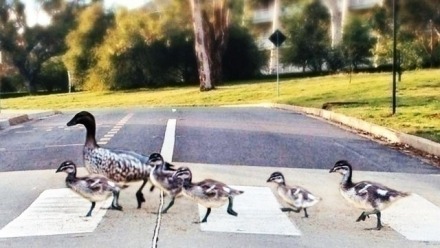Afterburn: The emotional legacy of bushfire

In the forests and valleys of the Victorian ranges, Aboriginal people knew March as the Eel Season, a time when hot winds ceased, temperatures cooled and eels were ready to be harvested from the rivers. It was a time also of diminishing bushfire danger. Even today, as the fire season lengthens with global warming, March remains a month when south-eastern Australians, particularly those living in the bush, begin to breathe a sigh of relief as the summer danger moderates. It is a month to reflect on the legacy and aftermath of bushfire.
Unfolding fern fronds after bushfire [Photo by Malcolm Calder, Steels Creek]
It is five years now since the Black Saturday firestorm killed 173 people in those forested mountain ranges of Victoria. In the March following the tragedy, historians in the School of History at ANU were invited to work with the people of Steels Creek in the Yarra Valley, a community that lost ten lives and two-thirds of its homes. People in the valley felt that history might help them come to terms with what had happened. They believed that capturing stories might enable them to renew their community and even, perhaps, help them to heal. They didn’t want any more infrastructural assistance, any more soft toys or any more hugs. They wanted history.
The final component of that five-year collaborative research project has now been completed. The first two elements were books: Living with Fire, written by Christine Hansen and Tom Griffiths, and Black Saturday at Steels Creek by Peter Stanley. The third and final part is a film by Moira Fahy entitled Afterburn: In the Tiger’s Jaws. This 60 minute DVD captures the trauma and recovery of three families from the Steels Creek community as they rebuild their lives after the devastating bushfires.
Afterburn travels into territory that is often neglected when we investigate fire in Australia – the long emotional shadow cast by the trauma of tragic bushfire. When the limelight of national mourning and sympathy shifts away from communities and families that have suffered, what is the emotional legacy they are left to deal with, often alone, often unrecognised and unsupported? A decade ago, filmmaker Moira Fahy completed an award-winning online documentary on the bushfires of Black Friday 1939, where she investigated how the pain, trauma and terror of bushfire could endure throughout whole lives (see www.abc.net.au/blackfriday/). Some survivors of the 1939 firestorm had never spoken of their ordeal until Moira asked and listened 60 years later. Her combination of intelligent curiosity and genuine compassion enabled those elderly witnesses to finally break their silence.
Afterburn is Moira’s determined attempt to ensure that survivors of the 2009 firestorm are heard more immediately and sympathetically. In the aftermath of their loss, three families agreed to bear witness to the camera about their recent past, their tenuous present and their uncertain future. It was a bold and courageous decision by those families – one which we all must admire deeply, and for which we thank them sincerely. What would the future hold? Could they make sense of the past?
There is a further question that underpins the whole enquiry that led to the two books and the film: How can we embed the memory of occasional extreme bushfire in the culture of vulnerable human communities? It is a question of compelling academic interest, and it is also a question of survival.
Moira Fahy will be speaking at the first Canberra screening of her film as part of the ANU School of History Seminar Series on Wednesday 12 March, from 4 pm to 5.45 pm in the McDonald Room at the Menzies Library on the ANU campus.
Tom Griffiths









